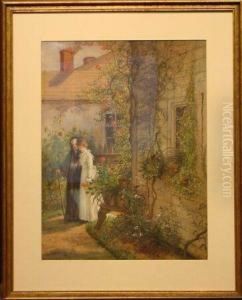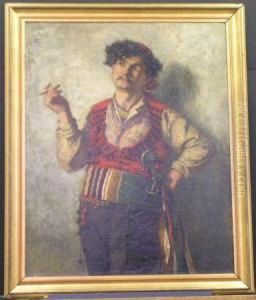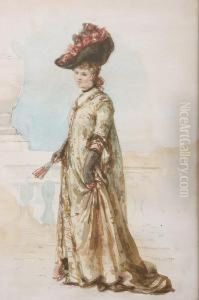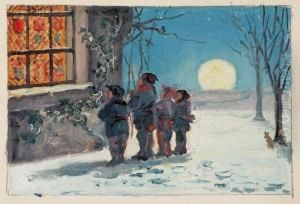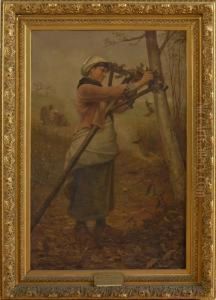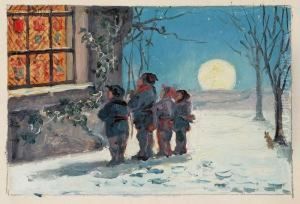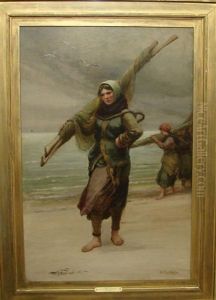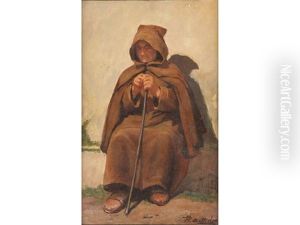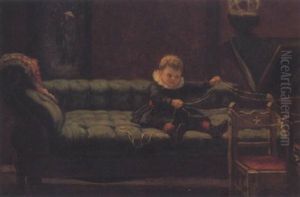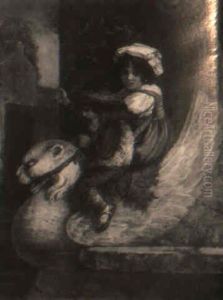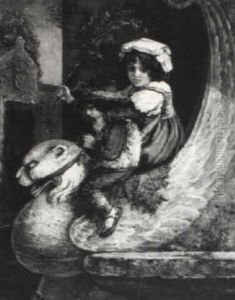Walter Satterlee Paintings
Walter Satterlee was an American artist born on June 27, 1844, in Brooklyn, New York. He was part of the late 19th-century American art movement, contributing significantly through his paintings which often captured historical and genre scenes with a particular emphasis on the detailed depiction of characters and their environments. Satterlee's education in art began under the guidance of his father, a successful businessman who encouraged his artistic pursuits. He further honed his skills at the prestigious National Academy of Design in New York and later, in a decision that would greatly influence his style and technique, he studied abroad in Europe. His time in Europe, particularly in London and Paris, exposed him to the works of European masters and the diverse artistic movements that flourished across the continent.
Throughout his career, Satterlee was known for his ability to capture the essence of American life and history through his art. His works often reflected a romanticized view of the past, with a particular focus on the Colonial and Revolutionary War periods. This was a common theme among artists of his era, who sought to create a sense of national identity through art that celebrated American themes. Satterlee's paintings are characterized by their rich detail, vibrant colors, and the emotional depth of the figures portrayed. He was not just a painter but also an illustrator, contributing his talents to numerous publications of his time, further showcasing his versatility as an artist.
Satterlee's contributions to the art world were recognized by his peers and the public alike. He was a member of various prestigious art organizations, including the National Academy of Design, where he was elected as an associate in 1878 and became a full Academician in 1891. His works were exhibited widely during his lifetime, including at the Paris Exposition of 1878, where he gained international exposure. Satterlee's legacy is preserved in the collections of several institutions and in the continued appreciation of his work by art historians and collectors. He passed away on May 27, 1908, in New York, leaving behind a body of work that continues to be celebrated for its historical significance and artistic beauty.
